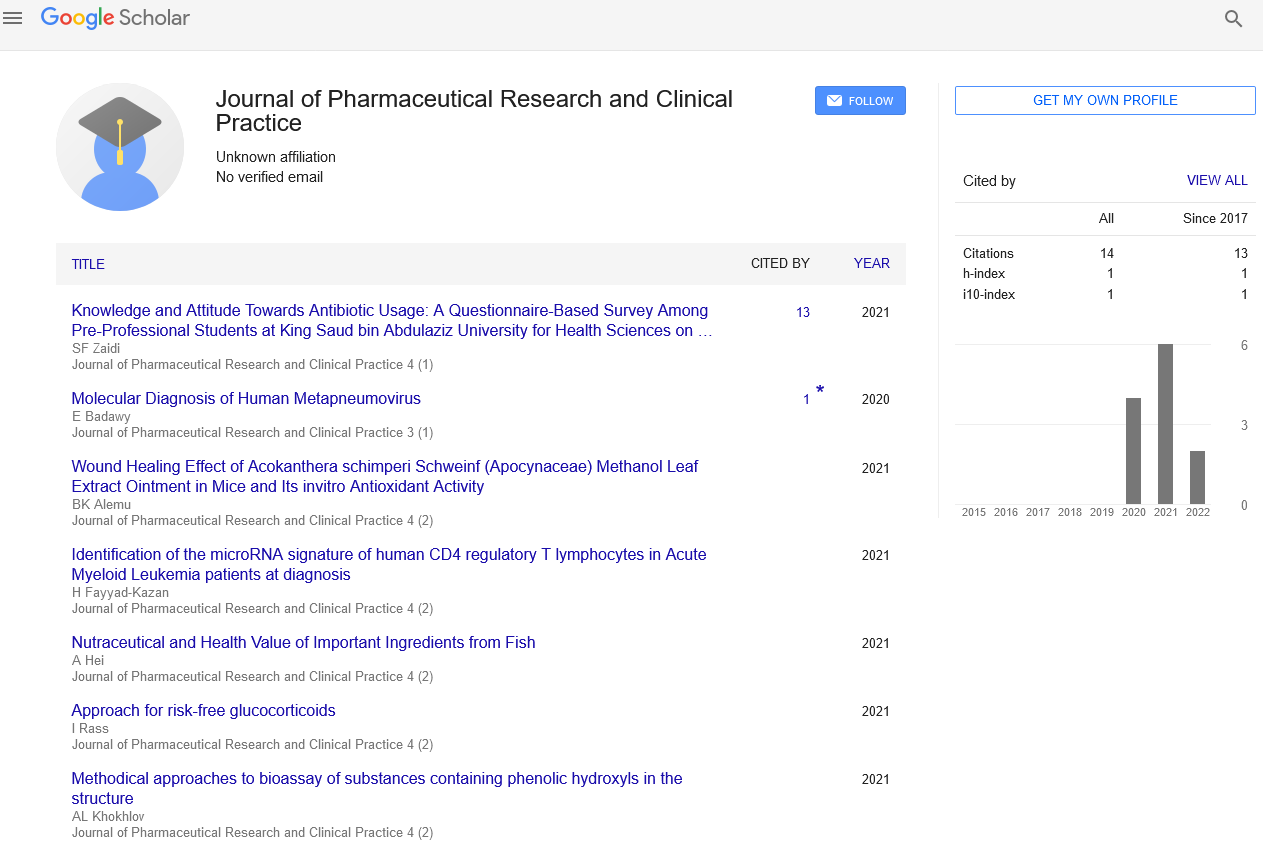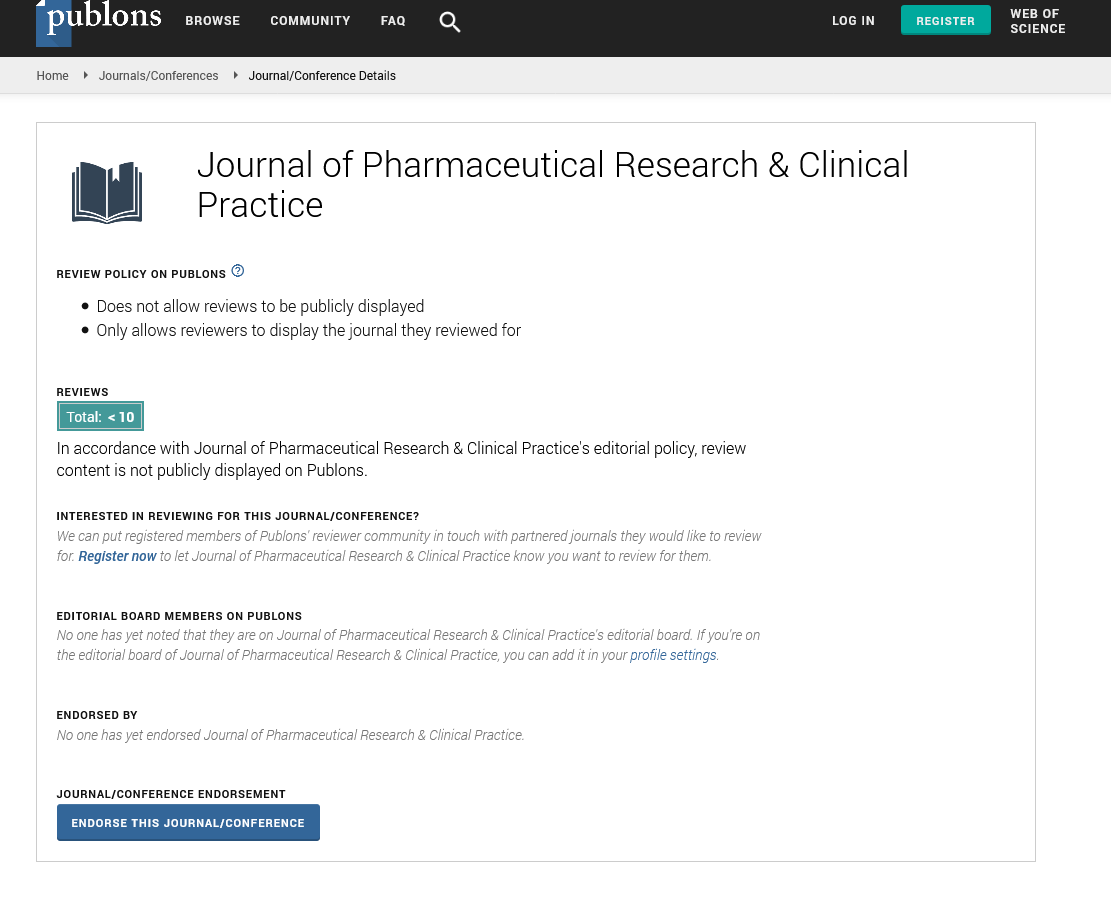Short Article - Journal of Pharmaceutical Research and Clinical Practice (2020) Volume 3, Issue 2
The Role of Biomarkers in Clinical Endpoint Success
iomarkers in Clinical Endpoint Success
Clarivate Analytics, UK
Abstract
Nearly half of all clinical trials now employ some type of bio- marker, but little has been reported on the correlation of the number of biomarkers used or the role of the biomarker on achieving the clinical trial endpoints. We aimed to under- stand the association between trial endpoint success, trial phase and the influence of different biomarker roles. Using a global dataset of 4,450 phase I to phase IV trials that includes specific indexing for biomarker strategy and trial outcomes, we found a correlation between the average number of bio- markers employed and reported trial outcomes. We also observed that those that employed a toxicity marker were more likely to be successful while those that used a disease marker were less likely.
The increased use of biomarkers in clinical trials is well documented (1), with nearly half of all clinical trials now employing some type of biomarker. However, little has been reported on the correlation of the number of biomarkers employed or the role of the biomarker on achieving clinical trial endpoint. Specifically, we wanted to understand the association between trial endpoint success, trial phase and the influence of different biomarker roles. While previous studies have looked at phase transition as a measure of biomarker utility (2, 3), we chose endpoint success since it takes into account situations where a trial may reach the desired outcomes of efficacy and safety yet not move to the next phase of trials due to strategy decisions, lack of robust differentiation to standard of care, or inability to compete to be first or best in market. When applying biomarkers it is typical to categorize them into three main biomarker roles: disease, efficacy and toxicity. Disease markers are used if a disease already exists (diagnostic biomarker). Efficacy biomarkers provide an indication of the probable effect of treatment on the patient, and toxicity biomarkers indicate a treatment related adverse reaction.
In this analysis we compared the reported success of trials as measured by a definitive statement from the sponsors that the endpoints measured were met and the use of a biomarker. Using the data in Clarivate Analytics Cortellis Clinical Trials Intelligence (CTI) over the previous 10 years, we identified a cohort of 4,450 phase I through phase IV trials for which an explicit statement, identified in a variety of company and scientific publications from the sponsor, indicated either a positive or negative result in respect to the desired clinical endpoints.
Within the cohort of trial records we observed 3,459 (76%) of trials in the cohort were reported with a positive endpoint outcome, while 1,091 (24%) were explicitly reported with a negative endpoint outcome. Numerous studies have shown success rates as measured by phase transition are significantly lower than represented in this cohort (2, 3). This may indicate a bias by sponsors to reporting only positive results, and therefore the results of any study measuring trial outcomes to biomarkers must be looked at with that in mind, similar to reports by others (3). We also observed that those that employed a toxicity marker were more likely to be successful while those that used a disease marker were less likely. However, little has been reported on the correlation of the number of biomarkers employed or the role of the biomarker on achieving clinical trial endpoint. Specifically, we wanted to understand the association between trial endpoint success, trial phase and the influence of different biomarker roles.
The increased use of biomarkers in clinical trials is well documented (1), with nearly half of all clinical trials now employing some type of biomarker. However, little has been reported on the correlation of the number of biomarkers employed or the role of the biomarker on achieving clinical trial endpoint. Specifically, we wanted to understand The association between trial endpoint success, trial phase and the influence of different biomarker roles. While previous studies have looked at phase transition as a measure of biomarker utility (2, 3), we chose endpoint success since it takes into account situations where a trial may reach the desired outcomes of efficacy and safety yet not move to the next phase of trials due to strategy decisions, lack of robust differentiation to standard of care, or inability to compete to be first or best in market. In this analysis we compared the reported success of trialsas measured by a definitive statement from the sponsors that the endpoints measured were met and the use of a biomarker. Using the data in Clarivate Analytics Cortellis Clinical Trials Intelligence (CTI) over the previous 10 years, we identified a cohort of 4,450 phase I through phase IV trials for which an explicit statement, identified in a variety of company and scientific publications from the sponsor, indicated either a positive or negative result in respect to the desired clinical endpoints. Within the cohort of trial records we observed 3,459 (76%) of trials in the cohort were reported with a positive endpoint outcome, while 1,091 (24%) were explicitly reported with a negative endpoint outcome. Numerous studies have shown success rates as measured by phase transition are significantly lower than represented in this cohort (2, 3). This may indicate a bias by sponsors to reporting only positive results, and therefore the results of any study measuring trial outcomes to biomarkers must be looked at with that in mind, similar to reports by others (3) As with all retrospective analyses, the more data that can be incorporated, the greater the confidence in the conclusions. While the number of trials in this cohort is small it is still significant enough to show that correlation of the types and number of biomarkers used can be correlated to endpoint success.


